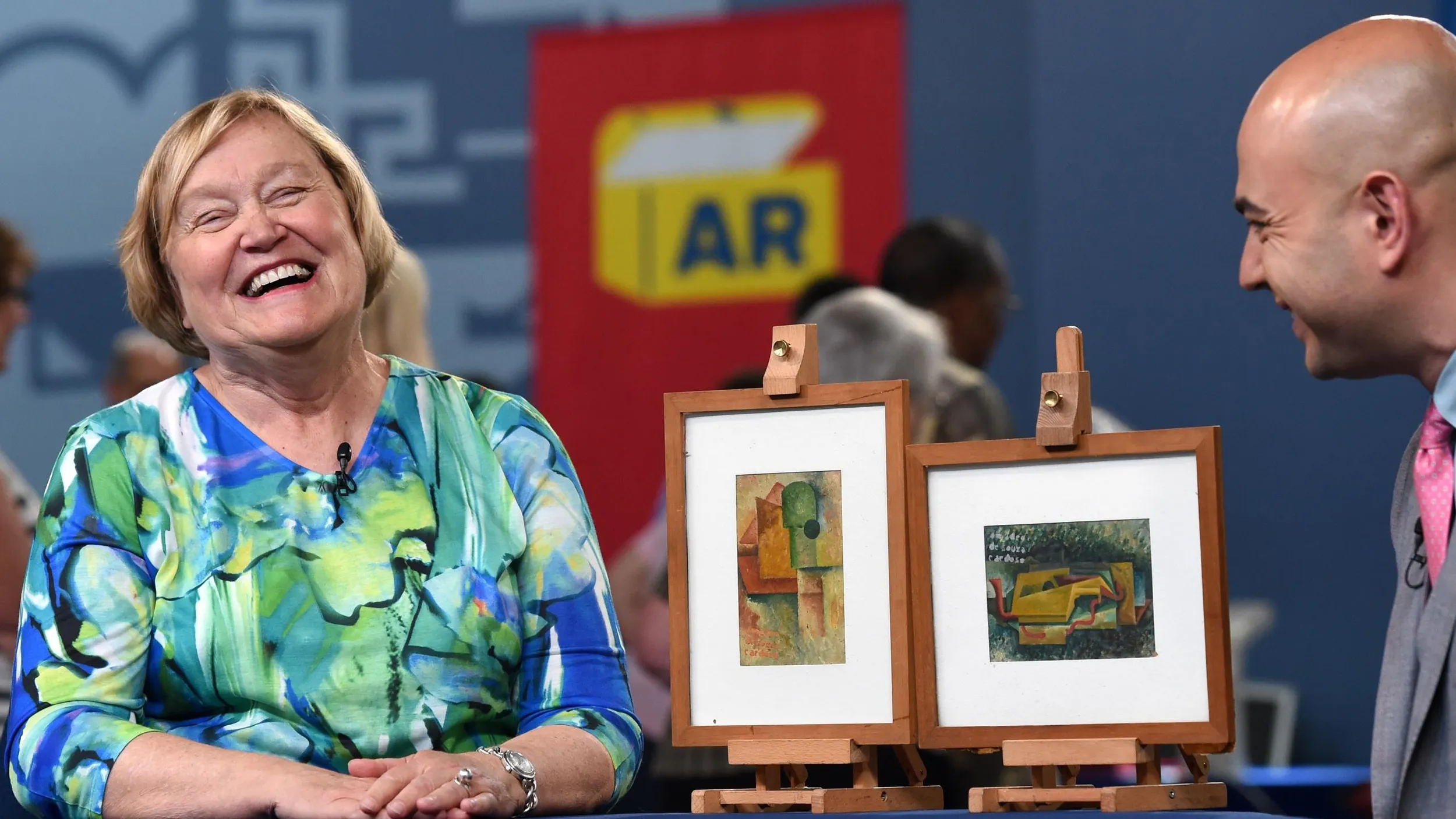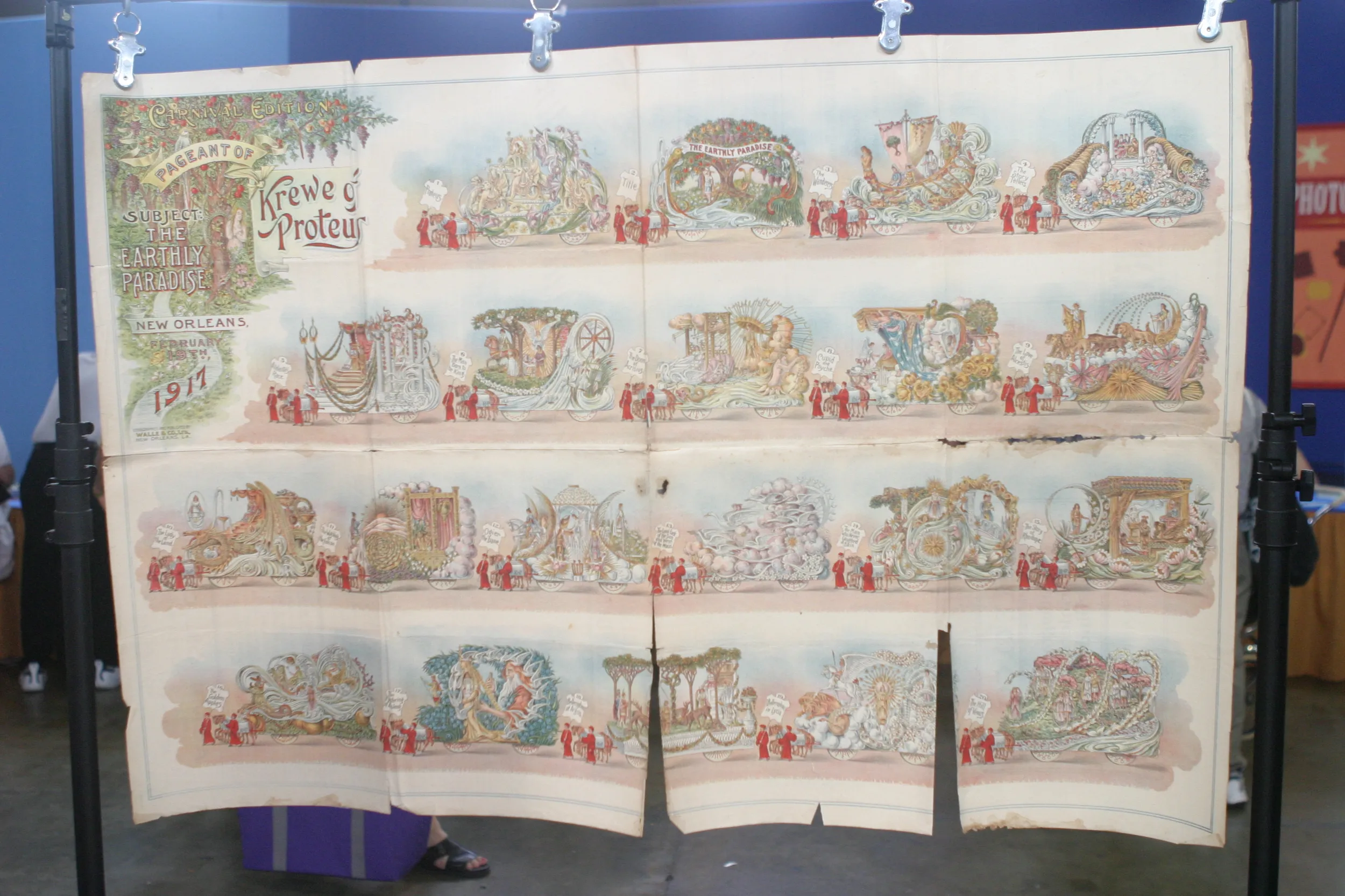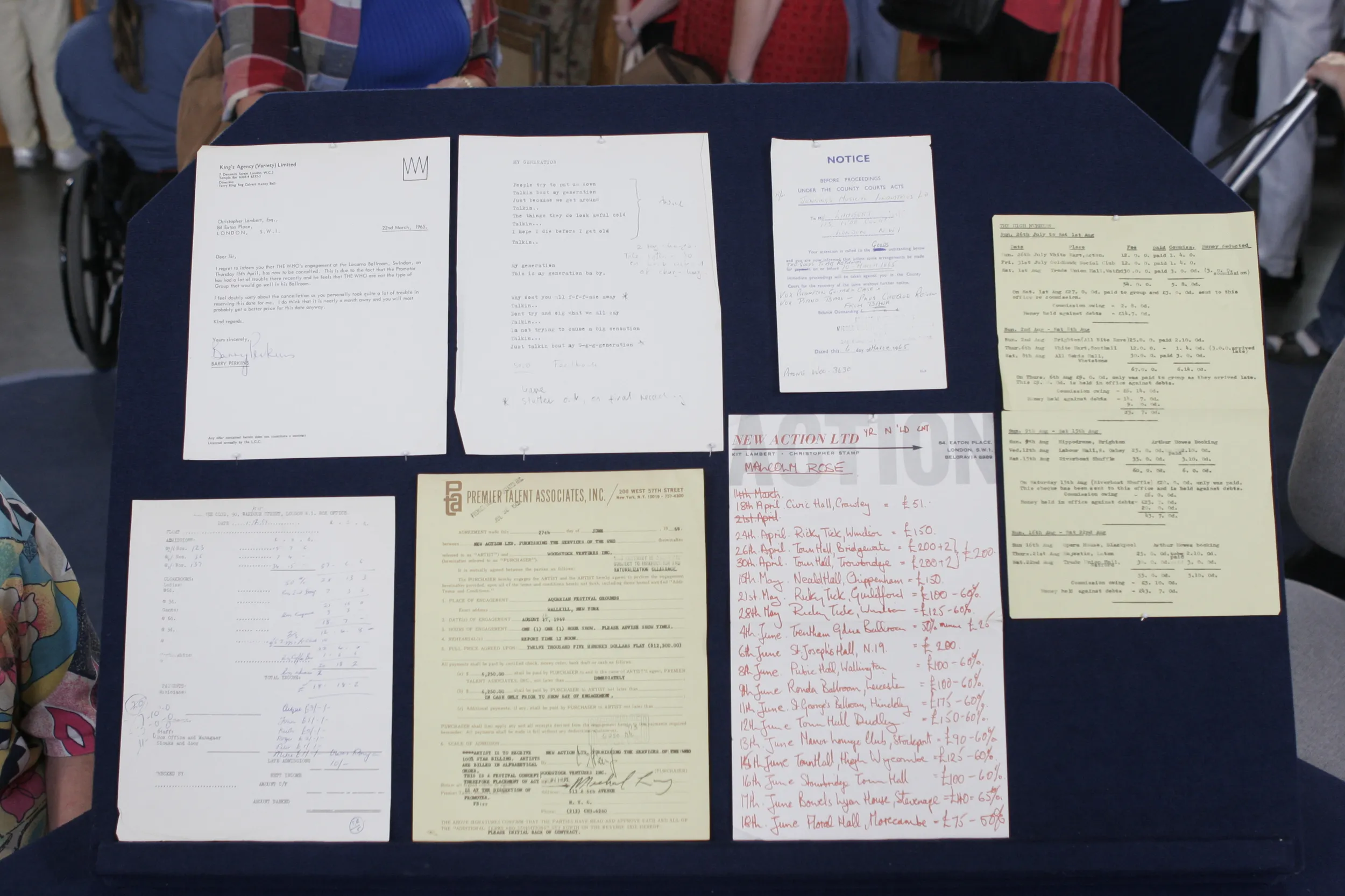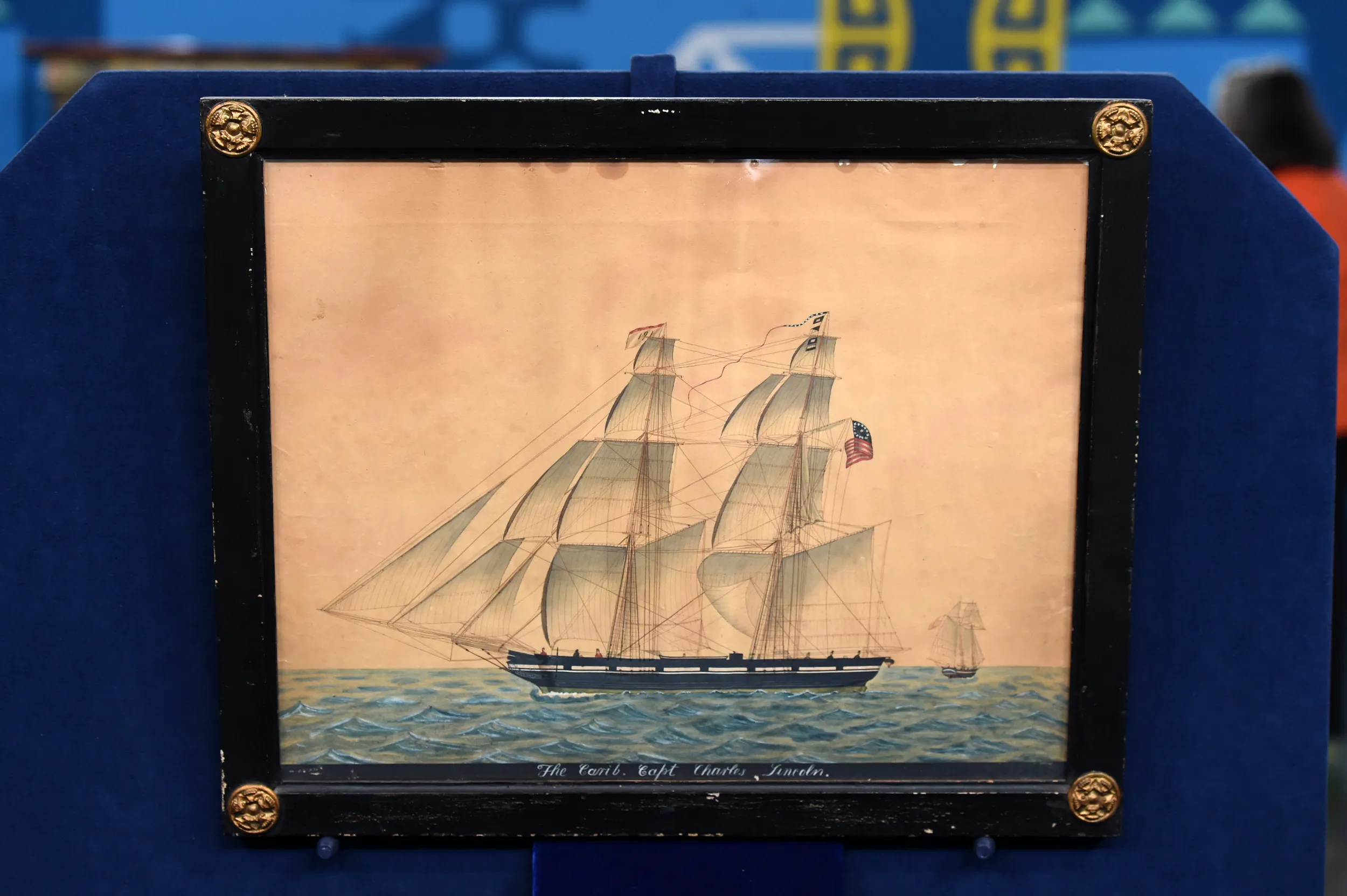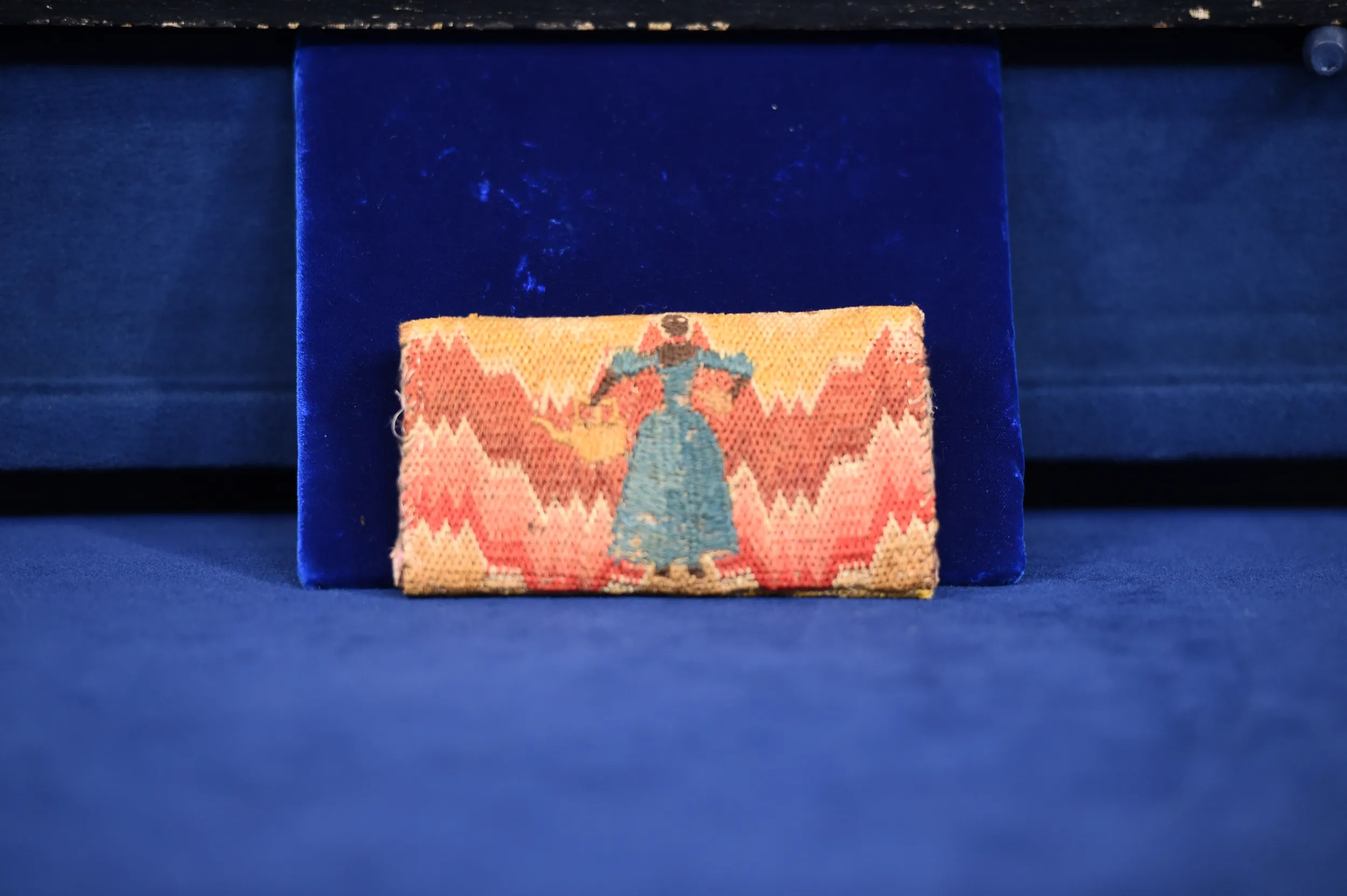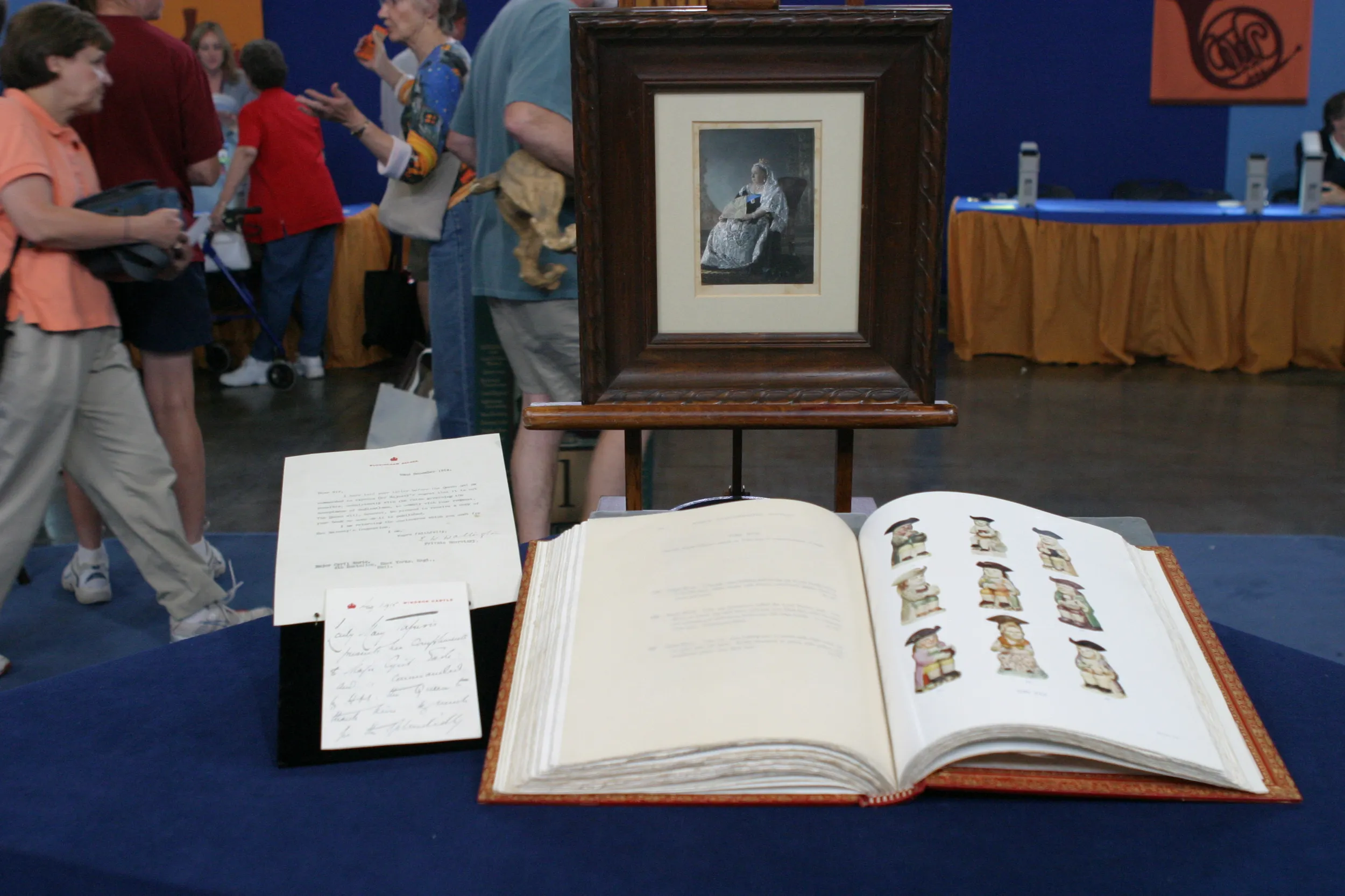GUEST: My grandfather was Paul Lincoln, and I believe this Captain Charles Lincoln was his great-grandfather.
APPRAISER: It's not that ship portraits of the early 19th century are terribly rare, but they are desirable, they're very collectible, and we know a little bit about the captain. He was born very early in the 19th century in Brewster, Massachusetts, on Cape Cod. He worked for a company that traded between Boston and the Mediterranean ports, and they basically, I think, shipped fruit and that sort of thing. There were a number of artists who did ship portraits, and they had to be reasonably accurate from a technical standpoint, and probably it was at the request of the ship owner or the skipper of the ship. It's in pretty good condition. The background is a little toned, and that's the result of the paper being against probably a wooden back. But it's remarkably in its original ebonized frame with those little brass rosettes.
GUEST: Uh-huh.
APPRAISER: So this picture would date from maybe 1825 or '30, so it's a relatively early ship picture.
GUEST: Uh-huh.
APPRAISER: This would bring predictably, at least at auction, probably between $3,000 and $5,000. Desirable picture. In the process of looking through the box with the papers, we found something else that isn't directly related to this. I would suspect that it probably came down in the family, and that's why it's in that box. We kind of gasped when we saw this. This is an 18th century flame stitch wallet. It's handmade, probably made by a girl or a young lady maybe in school, or at least a woman who had learned needlework, so she was very proficient. Considering your family's history, I would not be surprised if this originated in Massachusetts, made between maybe 1760 and 1780. So it's a lot older than the ship portrait. Over the years, we've handled a number of these flame stitch wallets. There are a couple of things about this, and one thing in particular that I have never, ever seen before. This wallet pictures a black woman with a teapot and a teacup in a long dress. And when we turn it over, the flap side pictures a black manservant. He has a tray with a goblet on it. I have never seen a piece of 18th century needlework depicting black servants. And it's interesting to note that they are very well attired. I mean, the woman is in a long dress, and the man himself is in a long red coat, so they're in formal attire, and they had very specific jobs to do in the family. I think that they could possibly have been slaves. We don't really know that; we can only make that conjecture. It's in pretty good shape. It has very good color. It's a bit worn. There probably was some sort of button or clasp which is long gone. The interior is wool, divided into sections. But all in all, when you consider how old this is, and the fact that these are all vegetable dyes, which can be very fugitive, this could have been eaten to nothing by moths. Somehow, it's been kept from considerable harm. And having never seen a wallet with this pictorial depiction of people, at auction, we think the wallet is probably worth in the area of, let's say, $10,000.
GUEST: Wow.
APPRAISER: Pretty special.
GUEST: Yeah, sure is. Wow.
APPRAISER: Yes, indeed.
GUEST: That's neat.

